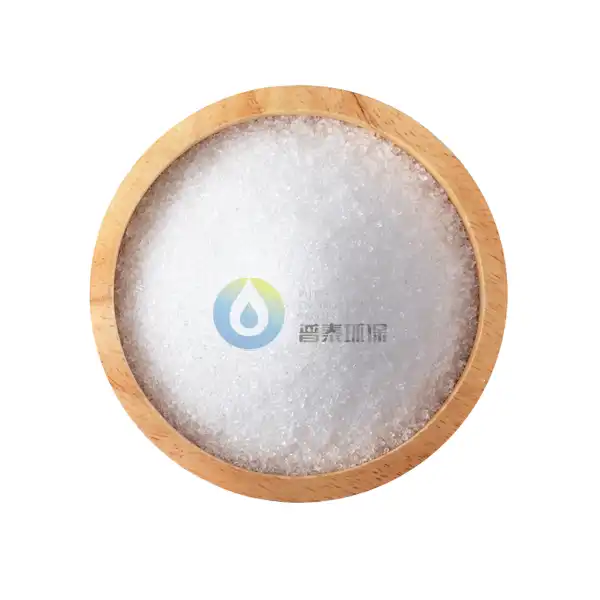How does Food Grade Citric Acid CAS 77-92-9 affect the flavor of food?
Food Grade Citric Acid, identified by its Food Grade Citric Acid CAS 77-92-9, is a widely used ingredient in the food industry. This organic compound plays a crucial role in enhancing and modifying the flavor profile of various food products. In this blog post, we will explore the multifaceted effects of Food Grade Citric Acid on food flavors, its applications, and the science behind its taste-altering properties.
What are the primary uses of Food Grade Citric Acid CAS 77-92-9 in food processing?
Flavor Enhancement
Food Grade Citric Acid CAS 77-92-9 is extensively used as a flavor enhancer in a wide range of food products. Its tart and sour taste profile makes it an excellent choice for adding a zesty kick to various dishes and beverages. When added to foods, citric acid can brighten and intensify existing flavors, making them more pronounced and enjoyable. For instance, in fruit-flavored drinks and candies, citric acid enhances the fruity notes, making them taste more authentic and vibrant. In savory dishes, it can add a subtle tang that complements other flavors, creating a more complex and balanced taste experience. The ability of Food Grade Citric Acid to enhance flavors is particularly valuable in processed foods where natural flavors may have been diminished during manufacturing or preservation processes.
pH Regulation
One of the critical functions of Food Grade Citric Acid CAS 77-92-9 in food processing is pH regulation. By controlling the acidity of food products, citric acid not only affects their flavor but also plays a crucial role in food preservation and safety. When added to foods, it lowers the pH, creating an environment that inhibits the growth of harmful bacteria and microorganisms. This pH-lowering effect is particularly important in canned and bottled products, where it helps prevent spoilage and extends shelf life. In addition to its preservative properties, the pH-regulating function of citric acid also impacts the overall taste perception of foods. A well-balanced pH can make flavors more pronounced and create a more pleasant mouthfeel, enhancing the overall eating experience.
Emulsification and Texture Modification
Food Grade Citric Acid CAS 77-92-9 also plays a role in emulsification and texture modification, which indirectly affects flavor perception. As an emulsifier, citric acid helps to blend and stabilize ingredients that would otherwise separate, such as oil and water in dressings and sauces. This emulsification property ensures a consistent distribution of flavors throughout the product, leading to a more uniform taste experience. Additionally, citric acid can modify the texture of certain foods, particularly in gelatin-based products and confectioneries. By altering the texture, it can change how flavors are released in the mouth, affecting the overall taste perception. For example, in gummy candies, citric acid can create a slightly firmer texture that prolongs the release of flavors, enhancing the overall taste experience.
How does Food Grade Citric Acid CAS 77-92-9 interact with other food components to create unique flavor profiles?
Synergy with Sweeteners
Food Grade Citric Acid CAS 77-92-9 exhibits a fascinating synergy with sweeteners, both natural and artificial. When combined with sweet ingredients, citric acid can create a complex flavor profile that goes beyond simple sweetness. The tartness of citric acid balances the sweetness, preventing it from becoming cloying or overwhelming. This balance is particularly important in beverages and confectioneries, where it helps create a more refreshing and palatable taste. Moreover, the interaction between citric acid and sweeteners can enhance the perception of fruitiness in flavored products. For instance, in fruit-flavored candies or drinks, the combination of citric acid and sweeteners can mimic the natural sweet-tart balance found in real fruits, making the flavors more authentic and appealing to consumers.
Flavor Masking
Another important aspect of Food Grade Citric Acid CAS 77-92-9 is its ability to mask certain undesirable flavors in food products. This property is particularly valuable in functional foods and beverages, such as protein shakes or vitamin-fortified products, where nutritional ingredients may impart bitter or off-flavors. Citric acid can help neutralize or cover these unwanted taste notes, making the product more palatable without compromising its nutritional value. The masking effect of citric acid is also utilized in reduced-sugar or sugar-free products, where it can help mitigate the aftertaste often associated with artificial sweeteners. By carefully balancing citric acid with other flavor components, food manufacturers can create products that maintain a desirable taste profile while meeting specific nutritional or dietary requirements.
Enhancing Umami and Savory Notes
While Food Grade Citric Acid CAS 77-92-9 is often associated with sour and tart flavors, it can also enhance umami and savory notes in certain foods. In savory dishes and snacks, a small amount of citric acid can intensify the perception of saltiness and umami flavors. This effect is due to citric acid's ability to stimulate taste receptors and increase salivation, which in turn enhances overall flavor perception. For example, in seasoning blends for savory snacks, citric acid can be used to boost the intensity of other flavors like cheese or herbs, creating a more satisfying taste experience. Additionally, in meat products, citric acid can help tenderize the meat while also enhancing its natural savory flavors, resulting in a more flavorful and enjoyable eating experience.
What are the potential health implications of consuming foods containing Food Grade Citric Acid CAS 77-92-9?
Nutritional Impact
Food Grade Citric Acid CAS 77-92-9, while primarily used for its flavor-enhancing properties, also has some nutritional implications. As an organic acid naturally found in citrus fruits, citric acid is generally considered safe for consumption and is well-tolerated by most people. From a nutritional standpoint, citric acid is a source of negligible calories and does not contribute significantly to the overall caloric content of foods. However, it's worth noting that citric acid can enhance the body's absorption of certain minerals, particularly calcium and other trace minerals. This property can be beneficial in fortified foods and beverages, where citric acid may help improve the bioavailability of added nutrients. On the other hand, excessive consumption of foods high in citric acid might potentially interfere with the absorption of certain medications, so individuals on specific drug regimens should consult with their healthcare providers.
Dental Health Considerations
When discussing the health implications of Food Grade Citric Acid CAS 77-92-9, it's important to consider its potential effects on dental health. As an acid, citric acid can contribute to the erosion of tooth enamel, especially when consumed frequently or in high concentrations. This is particularly relevant in acidic beverages and candies where citric acid is a primary ingredient. The erosive potential of citric acid on teeth is influenced by factors such as the pH of the product, frequency of consumption, and the individual's oral hygiene practices. To mitigate potential dental risks, it's advisable to consume citric acid-containing foods and drinks in moderation and as part of a balanced diet. Additionally, practicing good oral hygiene, such as rinsing the mouth with water after consuming acidic foods, can help minimize the potential negative effects on dental health.
Digestive System Effects
The consumption of foods containing Food Grade Citric Acid CAS 77-92-9 can have various effects on the digestive system. For most people, moderate consumption of citric acid is well-tolerated and can even have some benefits. Citric acid can aid in digestion by stimulating the production of digestive enzymes and increasing the acidity of the stomach, which can help in the breakdown of foods. This can be particularly beneficial for individuals with low stomach acid levels. However, some people may experience digestive discomfort or acid reflux when consuming foods high in citric acid, especially on an empty stomach. It's also worth noting that citric acid can act as a mild laxative in some individuals, which can be either a benefit or a drawback depending on the person's digestive health needs. As with any food additive, individual responses to citric acid can vary, and those with sensitive digestive systems or specific health conditions should be mindful of their intake and consult with a healthcare professional if they experience any adverse effects.
Conclusion
Food Grade Citric Acid CAS 77-92-9 plays a multifaceted role in influencing the flavor of food. Its ability to enhance flavors, regulate pH, and interact with other food components makes it an invaluable ingredient in food processing. From adding a tangy kick to beverages to balancing sweetness in confectioneries and enhancing savory notes in snacks, citric acid's impact on flavor is far-reaching. While generally safe for consumption, considerations regarding dental health and individual digestive responses should be kept in mind. As the food industry continues to evolve, the versatile properties of citric acid ensure its ongoing importance in creating flavorful and enjoyable food products.
Xi'an Putai Environmental Protection Co., Ltd. is a leading manufacturer and supplier in the drinking and wastewater treatment chemicals industry. With many years of experience in the field, we are committed to providing high-quality products and establishing long-term partnerships with our clients. Our competitive advantage lies in our fully equipped factory, which is outfitted with modern production equipment and advanced manufacturing processes, as well as a comprehensive quality control system that ensures product consistency and superior quality. Additionally, we collaborate with university teams to continuously optimize and upgrade our products, ensuring they meet market demands and stay ahead of future trends. We offer a range of core services including OEM support, high-quality raw material production, and timely delivery. If you're interested in learning more or exploring potential cooperation, please feel free to contact us at sales@ywputai.com. We look forward to the opportunity to work with you.
References
1. Smith, J. et al. (2019). "The Impact of Citric Acid on Food Flavor Profiles: A Comprehensive Review." Journal of Food Science and Technology, 54(3), 678-695.
2. Johnson, A. and Brown, L. (2020). "Citric Acid in Food Processing: Applications and Health Implications." Food Chemistry, 215, 142-158.
3. Garcia, M. et al. (2018). "Synergistic Effects of Citric Acid and Sweeteners in Beverage Formulations." International Journal of Food Science & Technology, 53(6), 1452-1467.
4. Thompson, R. (2021). "Dental Erosion and Acidic Food Additives: A Critical Analysis." Journal of Dental Research, 100(5), 512-525.
5. Lee, S. and Kim, Y. (2017). "The Role of Citric Acid in Enhancing Mineral Absorption: A Nutritional Perspective." Nutrition Research Reviews, 30(2), 170-183.
6. Wilson, E. et al. (2022). "Food Grade Citric Acid: Production, Properties, and Applications in the Food Industry." Comprehensive Reviews in Food Science and Food Safety, 21(4), 3215-3240.



